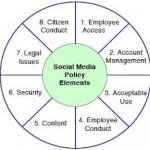 Nothing says “Merry Christmas” like cheap crap presents manufactured by first-world companies owned by billionaires, operating in third-world countries employing sweat-shop labour who toil long hours in unsafe working conditions for slave wages. Is this the true meaning of Christmas?
Nothing says “Merry Christmas” like cheap crap presents manufactured by first-world companies owned by billionaires, operating in third-world countries employing sweat-shop labour who toil long hours in unsafe working conditions for slave wages. Is this the true meaning of Christmas?
Category Archives: Wisdom
Advice on Beating the Heat

Everyone as at risk during extremely hard weather but some people have a higher risk than others of becoming ill. It is very important that those of high risk take extra care of themselves during hot weather.
Here is some simple advice to help you survive and thrive in Summer:
- Keep hydrated: Drink regularly. Have plenty of cold water and ice in the fridge. Carry a bottle of cold water with you when you’re away from home.
- Eat sensibly: Eat cold light foods such as salads and fruit, rather than hot or heavy options. Avoid salty foods. Try to eat normally even if you don’t feel like eating as your body needs energy to cope with the heat.
- Behave accordingly: Follow your doctor’s advice if you have any medical conditions. Keep physical activities to a minimum. Avoid strenuous activities like gardening, home improvements, or sport. Rest if you feel tired to conserve your energy.
- Stay cool inside: Stay inside and out of the heat as much as possible. Draw blinds and curtains to keep the heat out of the house during the day. Open the house up when the sun goes down. Use a fan or air conditioner set to cool. Splash cold water on your face and the back of your neck. Take a cool shower or bath or use a wet flannel or towel to wipe yourself down. Freeze a damp cloth to use as a cold compress at night to keep your neck cool.
- Stay protected outside: If you must go outside, go in the early morning or the evening when it is cooler. Whether the sun is shining or not, use effective sunscreen, wear a wide-brimmed hat or use an umbrella, wear light-weight light-coloured loose-fitting long-sleeved cotton clothing, and wear effective sun glasses. Visit air-conditioned libraries, galleries, theatres, shopping malls, or cultural centres.
- Check on others: Monitor babies, children, elderly neighbours, and pets for any symptoms of heat-stress as they tend to be more vulnerable to the heat.
Disruptive Media on Annual Reports
 Our Community published this short but compelling piece of advice about annual reports from Disruptive Media in its latest Our Community Matters ezine:
Our Community published this short but compelling piece of advice about annual reports from Disruptive Media in its latest Our Community Matters ezine:
- Make your annual report an all-rounder
Your annual report can be a multi-purpose publication that works as a marketing tool across the entire year, so you get maximum mileage from the time and money you’ve invested in it. This type of report can help you strengthen your brand, raise your profile, improve fundraising opportunities and connect with the people you want to reach. - Go digital
Many organisations publish their annual reports online. Not only does this save on printing and distribution costs, it also seriously extends the value of what you’re producing. Creating a digital report opens up opportunities to reuse content across social media, allowing you to extend your reach and share your story with a wider audience. - Find a theme
Giving your annual report a theme is a great way to make it more memorable. The theme will guide the style of writing, photo selection and overall design. Using a theme keeps your message consistent and binds the report together. It also makes for much more interesting reading. - Create a story
People love stories. There’s something incredibly powerful about a personal account that just can’t be matched by cold facts and figures. So look for ways to thread stories throughout your report. Quotes, interviews and short stories are great ways to show how you’ve made a difference. Remember, too, that stories don’t have to be confined to print – videos make compelling, highly shareable content. - Use quality photos
Just as a good yarn is irresistible, so too do photos have spectacular pulling power. Well-placed photos break up large chunks of text and can breathe life into an otherwise dull report. Photos also connect with people on an emotional level, which can help them to better relate to what your organisation is about. The visual story of your annual report is just as important as the words, so it’s worth investing in good-quality photos throughout the year. As a bonus, of course, you can get extra mileage out of great photos in your other communications too.
COTA on Volunteers
 Australian volunteers are essential to society and many charities would struggle to survive without them – but the benefits don’t only flow one-way. Here are a few interesting points about volunteers from the Council of the Ageing (COTA):
Australian volunteers are essential to society and many charities would struggle to survive without them – but the benefits don’t only flow one-way. Here are a few interesting points about volunteers from the Council of the Ageing (COTA):
- Of the 600,000 Not-For-Profit organisations in Australia, only 60,000 have paid staff
- Volunteers annually contribute $200 Billion to the Australian economy
- The numbers of volunteers in Australia has doubled from 3.2 Million in 1995 to 6.1 Million in 2010
- The rate of volunteering by young people in Australia has increased from 16% in 1995 to 27% in 2010
- Volunteers are happier, healthier, live longer and sleep better than those who don’t volunteer.
So…what are you waiting for?
Sleep Health Foundation on Safe Driving
Dr David Hillman, the Chair of the Sleep Health Foundation, Australia’s leading national advocate for sleep health, has released his top tips for keeping drivers safe on the roads.
- Make sure you’ve had at least seven hours sleep the night before a long drive
- If you have to drive for long periods of time, try to take a short power nap after lunch
- Share the driving with someone else and help keep each other awake
- Have a break every two hours, get out of the car and walk around for a few minutes
- Don’t drive between 1am and 6am
- Don’t drive if you’ve been awake for more than 17 hours
- Pull over if you regularly notice difficulty keeping your eyes open, or find yourself relying on loud music, energy drinks or fresh air to stay awake.
Sleep Health Foundation, March 2015
AICD on Business Continuity
![]() Five key business continuity strategies from Matthew Sainsbury in “Company Director” [Vol 31, Iss 02, Mar/2015]
Five key business continuity strategies from Matthew Sainsbury in “Company Director” [Vol 31, Iss 02, Mar/2015]
- Understand the threat landscape
Likely and unlikely disasters will change on ayearly if not monthly basis. It is important that all directors and executive management remain on top of what the current risks are and the most current strategies to mitigate them. - Remain vigilant for both internal and external threats
One of the most common mistakes that organisations make in disaster planning is ignoring the potential for a disgruntled employee to cause trouble. - Be aware of personal safety and security
Company directors are listed on the company websites by necessity but a committed hacker can gain information on that person from even that short blurb. A director’s home and personal technology needs to be treated with the same need for security as their work devices. - Redundancy is key
Always have an alternative for every business process, supplier an dtechnology project and make sure that the alternative is located in an area that is geographically separate from the main location. Have robust plans in place to automatically roll over as a backup in the event of a disaster. - Have full disaster management and succession plans in place
In a disaster, a chaotic environment can cause more mistakes and when that happens the impact of the event can be even greater. Having clearly laid-out and pre-prepared strategies for managing disasters will minimise the impact.
Miller on For-Profits v Not-For-Profits
 Here’s an interesting metaphor explaining the differences between For-Profit and Not-For-Profit Organisations taken largely from a presentation by Clara Miller from the F. B. Heron Foundation.
Here’s an interesting metaphor explaining the differences between For-Profit and Not-For-Profit Organisations taken largely from a presentation by Clara Miller from the F. B. Heron Foundation.
Let’s pretend you’re the owner of a restaurant. Your customer comes to pay the bill but before she offers her credit card, she says, “I’m going to restrict my payment to the chef’s salary. She’s great, and I just want to make sure I’m paying for the one thing that makes the real difference here. I don’t want any of this payment to go towards your rent, your crockery, your air-conditioning, or your accountant. They’re just not that important. The chef is where you should be spending your money!”
The irony is that controlling costs actually undermines efficiency and program quality. Over time, the inability of Not-For-Profits to invest in better staff learning & development, maintaining office amenities, introducing better IT systems, and developing innovative programs means that staff burn out, offices fall into disrepair, systems are not updated, and service improvement stalls.
In the same management situation, the difference between a For-Profit Manager and their Not-For-Profit counterpart is that the former instinctively overstaffs operations for growth, while the latter understaffs.
Our Community Board Builder Conference
Had 1 fantastic jam-packed day of learning at the Our Community Institute of Community Directors’ Board Builder Conference (Moonee Valley Racetrack, 23/Feb/2015):
- Some awesome presentations on NFP mergers, Crisis Management, Fundraising, Board Recruitment, ICT security, and People Management
- Some fabulous opportunities to network with 400+ not-for-profit board members and CEOs
- A challenging lunchtime presentation from one of Australia’s most prominent futurists, Dr Peter Ellyard
- Several chances to pick the brains of a number of not-for-profit governance experts during 2 provocative panel sessions
- Some great take-aways from the Commonwealth Bank and Moores Legal.
Bloomberg BNA on Social Media

![]() As an employer, it is important to develop the appropriate mindset when it comes to managing social media use by your employees, and keeping your social media policies and practices up-to-date. Here are a few best practices to consider from Bloomberg BNA:
As an employer, it is important to develop the appropriate mindset when it comes to managing social media use by your employees, and keeping your social media policies and practices up-to-date. Here are a few best practices to consider from Bloomberg BNA:
- Avoid general, overbroad, and undefined terms. Read each portion of your policy and ask yourself whether an employee could reasonably interpret it
- Avoid overly subjective terms that place too much discretion in the hands of employers as to what does and does not violate the policy, but little advance knowledge in the minds of employees as to precisely what is prohibited
- Carefully consider what business interests need to be protected, and narrowly tailor your workplace rules to accomplish that
- Apply and enforce your policy consistently, and in a manner that reflects a true intention to protect the business interests need to be protected
- Stay abreast of all developments in this area of the law, and discuss any uncertainties with your legal advisers
Gardner on Sick Leave
 Here is a sick leave policy that makes uncommon sense.
Here is a sick leave policy that makes uncommon sense.
“We’re all adults here. If you’re sick, please stay home.”
Tom Gardner, CEO and CoFounder of the Motley Fool.
